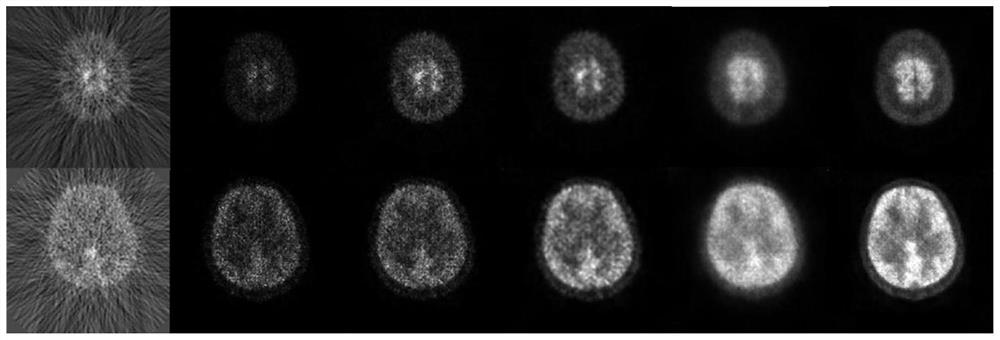Low-dose PET image reconstruction algorithm based on ADMM and deep learning
An image reconstruction and deep learning technology, applied in the field of biomedical image analysis, can solve the problems of data noise level varies from person to person, input image noise level changes, etc., and achieve the effect of strong denoising ability and high reconstruction speed
- Summary
- Abstract
- Description
- Claims
- Application Information
AI Technical Summary
Problems solved by technology
Method used
Image
Examples
Embodiment Construction
[0031] In order to describe the present invention more specifically, the technical solutions of the present invention will be described in detail below in conjunction with the accompanying drawings and specific embodiments.
[0032] The present invention combines the traditional EM iterative algorithm and the low-dose PET reconstruction algorithm based on deep learning. The overall implementation process is as follows: figure 1 As shown, it specifically includes the following steps:
[0033] (1) Data downsampling. Since the PET data collection conforms to the Poisson distribution, in this embodiment, Poisson down-sampling is used to down-sample the projection data of the standard dose by different multiples.
[0034] (2) The ADMM operator decomposes sub-problems, and determines the structure of the neural network as figure 2 shown.
[0035] According to the principle of PET imaging, the relationship between the measured data and the estimated data satisfies the following for...
PUM
 Login to View More
Login to View More Abstract
Description
Claims
Application Information
 Login to View More
Login to View More - R&D
- Intellectual Property
- Life Sciences
- Materials
- Tech Scout
- Unparalleled Data Quality
- Higher Quality Content
- 60% Fewer Hallucinations
Browse by: Latest US Patents, China's latest patents, Technical Efficacy Thesaurus, Application Domain, Technology Topic, Popular Technical Reports.
© 2025 PatSnap. All rights reserved.Legal|Privacy policy|Modern Slavery Act Transparency Statement|Sitemap|About US| Contact US: help@patsnap.com



